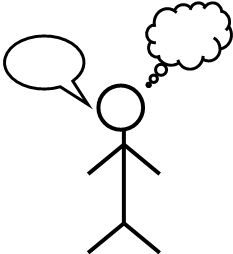Behavioral economics came about as a response to traditional economics, which assumed that, if a person had all the relevant information, they would make the rational decision. As market researchers, we know that’s not the case. Behavioral economics proves the point for us. It provides scientific support to the concept that people are not necessarily rational.
You’ve probably heard focus group detractors say that respondents don’t tell us what they really think. Behavioral economics shows they’re partly right: people assume they’re rational, so when we ask them a direct question (for example, ‘How do you go about choosing x?’) they look for the rational answer, and assume that’s how they would decide. But in reality, logic is not the main element in decision-making. Emotions, prior experiences and context play a huge role in their decision.
How it works
The challenge for market researchers: how do we get research participants to go beyond their rationalizations and uncover the things that truly motivate their decisions? The field of behavioral economics has uncovered the mechanisms of people’s irrational thought processes. Once we understand those mechanisms, we can use a variety of research techniques to uncover the truth.
Here are a few examples of some of the most common mechanisms and how they can help conduct research more effectively:
- Behavioral economics has shown that, even though emotions play an important role in the decision process, people tend to ignore that fact.
 When conducting research, we like to use techniques that give people permission to consider their emotions. One simple, yet powerful technique: we show a drawing of a person with a “speech bubble” and a “thought bubble.” Then we ask research participants to write what people say about the topic we’re investigating, and then what they think about that topic. The “say” part allows participants to give us their rational answer. Then the “think” part gives them permission to talk about the emotional aspect, especially since we phrase our question about what “other people” think. Behavioral economics has shown that people assume that others are irrational, even though they themselves are rational!)
When conducting research, we like to use techniques that give people permission to consider their emotions. One simple, yet powerful technique: we show a drawing of a person with a “speech bubble” and a “thought bubble.” Then we ask research participants to write what people say about the topic we’re investigating, and then what they think about that topic. The “say” part allows participants to give us their rational answer. Then the “think” part gives them permission to talk about the emotional aspect, especially since we phrase our question about what “other people” think. Behavioral economics has shown that people assume that others are irrational, even though they themselves are rational!)
- Clients frequently want customers and prospects to evaluate a product and tell us how likely they would be to buy that product. But behavioral economics has demonstrated the “frame of reference” mechanism: people’s evaluation of a product is dependent on the other products in their consideration set. Therefore, we always recommend against evaluating a product on its own. Instead, we might set up a simulated shopping experience and ask research participants which product they would choose. If they don’t choose our product, we might ask what would have to change for it to be chosen. What feature would need to be added or improved? How much lower would the price need to be? What is it about their chosen product that makes it worth a higher price?
Benefits
The above are just some of the ways in which behavioral economics enables us to uncover what research participants truly think, which then enables clients to create more effective marketing communications. To learn more about behavioral economics, I recommend reading Dan Ariely’s book, Predictably Irrational.